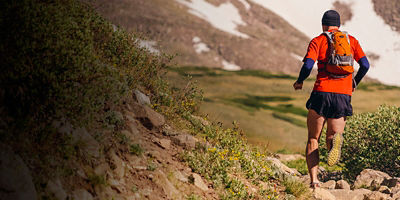
Developing good running habits is all about consistency—but the rain, sloppy trails, and unpredictable weather of spring and fall can deter even the most disciplined among us. There may be days during these so-called “shoulder seasons” when you arrive at your favorite trailhead only to find mud and slush. There may be afternoons when you leave the house in a T-shirt only to encounter a spring snowstorm mid-run. And in the fall, there are other surprises to contend with. There’s nothing quite like enjoying a peaceful fall run—only to be surprised by the sound of gunfire because you forgot about the opening of deer, elk, or turkey season.
Use the following tips to take the uncertainty in stride, and keep up your running practice no matter the conditions.
1. Mind the Mud
Both spring and fall can bring muddy conditions. To preserve the quality of the trails, it’s best to stay off them when they’re deep in mud. However, if you encounter a surprise muddy section, don’t try to sneak around it. Running beside or around puddles widens trails, destroying vegetation and turning singletrack into braided highways over time. Instead, either turn around or run right through the center of the trail. (Pro tip: Wear your waterproof running shoes and bring a sense of adventure.)
2. Shorten Your Stride
The trail isn’t the only one that can get wrecked on muddy days. To avoid slipping and falling on slick trails, shorten your stride. It’s a lot easier to recover from a slip in the middle of a short stride than it is during a long stride. Also, a shorter stride gives you more control of your footing because you’re contacting the ground more often.
3. Look Out for Ice
Early spring can leave “black ice” on otherwise dry trails. If temperatures are cold enough to freeze yesterday’s precipitation, keep an eye out for slick, dark sections of trail. These are especially likely at higher elevations and in the shade. If you encounter ice on your run, take small, slow steps to avoid slipping.
4. Have a Backup Plan
If you head out for a run and encounter a trail that’s too muddy or icy right from the get-go, your best bet is to find an alternate trail. Trails in full sun and those on south-facing slopes will dry or melt out faster than those in the shade or on north-facing slopes. And if even those are wet? It might be the day for a road run or a treadmill workout.




















